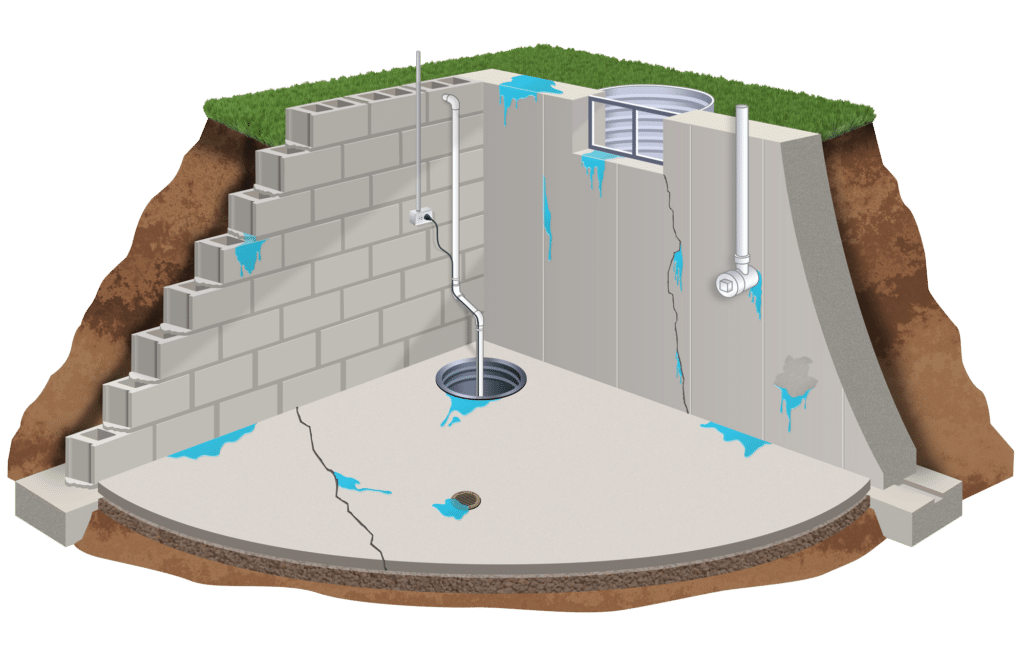Do-It-Yourself Waterproofing: Advice for the Weekend Project Planner
Waterproofing is a key aspect of house and construction maintenance that often gets neglected until it's too late. As DIY enthusiasts, we take pride in taking on DIY projects that enhance the safety and longevity of our homes. Understanding waterproofing is essential not just for avoiding costly repairs but also for creating a comfortable living environment. Whether it's your lower level, ceiling, or outdoor structures, the right waterproofing techniques can conserve you thousands of currency and safeguard your investment.
In this guide, we will explore all you need you need to know about waterproofing, including typical myths, the necessity of various applications, and the signs that suggest that your property may need waterproofing. We will also examine the DIY versus expert approaches, providing you with the knowledge to make wise decisions that best suit your needs and budget. Let's prepare and ensure our homes continue dry and safe for years to come.
The Significance of Moisture Protection
Moisture proofing is essential for all home and building as it delivers a strong protection against water damage, which can cause extensive repairs and construction issues over time. High levels of moisture can deteriorate foundations, encourage mold growth, and harm interior finishes. By utilizing proper waterproofing measures, homeowners not only protect their assets but also provide a more conducive living environment free from harmful mold and mildew.
Ignoring the need for waterproofing can lead to expensive repairs that far outweigh the initial investment in protective measures. Water damage can compromise the integrity of a building, leading to serious issues such as decaying wood, rusting metals, and ugly stains on walls and ceilings. By actively waterproofing multiple areas, such as basements, roofs, and bathrooms, property owners considerably reduce their long-term repair costs and enhance their overall property value.
Furthermore, waterproofing plays a vital role in energy efficiency. A properly sealed building reduces drafts and stops water intrusion, which can cause higher energy bills. In sustainable construction, effective waterproofing contributes to a building's longevity and strength against climate-related challenges. Utilizing waterproofing solutions is not just a defensive strategy; it is a forward-thinking approach to maintaining the value and functionality of any property.
DIY Waterproofing Techniques
One of the most effective DIY waterproofing techniques is using a waterproof sealant to your cellar walls. Start by cleaning the surface carefully to eliminate any grime, dust, or old paint. After the surface is clear and free of moisture, apply a high-quality waterproofing sealant with a brush. This will form a barrier that prevents moisture from penetrating the walls, thus lowering the risk of mold growth and water damage. Don't forget to pay extra attention to any gaps or seams, as these areas are often the most exposed.
Furthermore useful technique is to focus on proper drainage around your premises. Ensure that basement leak repairs and downspouts are functioning correctly and directing water away from your foundation. You can also install a French drain or improve the grading of your yard to facilitate better water flow. By guiding rainwater away from your home, you significantly reduce the pressure on your foundation and lower the chances of water leaking in. Consistent maintenance of your drainage systems is key to ensure continuous protection.
Finally, consider waterproofing your outdoor spaces, such as balconies and patios. Using a waterproof coating can prolong the life of these areas and stop water damage. Look for products specifically formulated for outdoor use, and verify the surface is clean and dry before application. By taking these preemptive steps, you can safeguard your investment and create a sustainable living space, all while successfully engaging in DIY waterproofing.
Choosing the Right Waterproofing Options
Selecting the appropriate waterproofing option for your house relies on multiple factors, like the particular areas that need protection, the local climate, and your budget. It's important to begin by checking the most vulnerable areas, such as cellars, bathrooms, roofs, and foundations. Each area may require different products and techniques to effectively prevent water intrusion and damage. Knowing the different types of waterproofing systems that you can choose from, such as interior vs. exterior solutions, will guide you in choosing the best choice for your requirements.
Once you have identified the areas of concern, research the various waterproofing products on the market. Look for paints, membranes, sealants, and additives that fit your specific requirements. It's crucial to take into account the longevity and effectiveness of these products, as well as any available warranties. User reviews and expert recommendations can provide valuable insight into the effectiveness of different waterproofing solutions. Don't hesitate to talk to professionals if you are unsure about the best option for your needs.

Finally, consider whether a DIY approach or employing a professional is the right path for your waterproofing project. While DIY solutions can save money and give you hands-on experience, they might not always yield the best results, especially for more complex or more complicated jobs. On the other hand, professional services can ensure a thorough application and compliance with local building codes. Evaluating the pros and cons of each approach will assist you decide which way to proceed, in the end leading to effective waterproofing that safeguards your property.